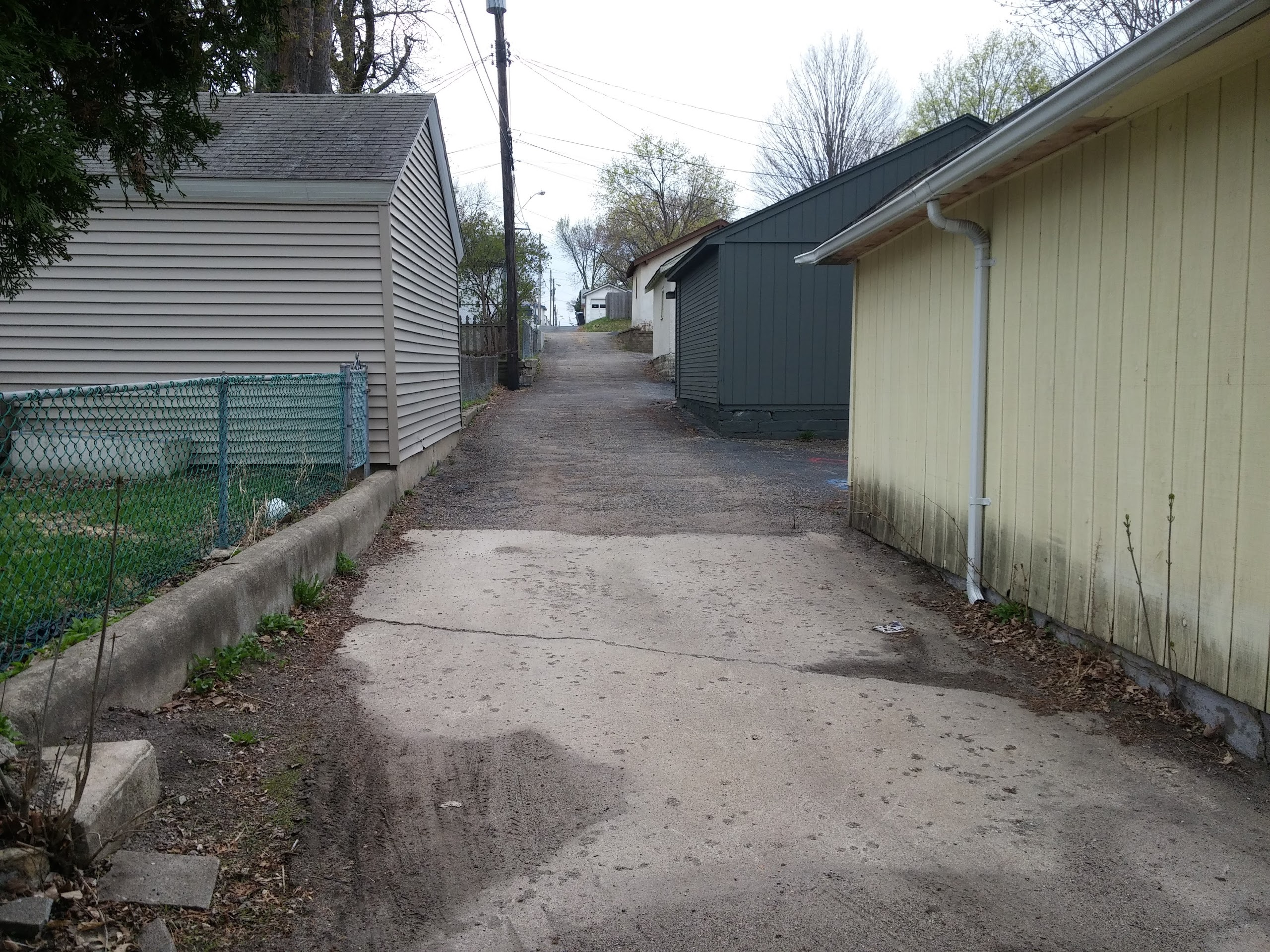How well does permeable pavement reduce runoff? Metro Blooms set out to answer this question in a privately-owned alley in Minneapolis’ Standish-Ericsson neighborhood. We compared how much rain flowed down the alley before and after the installation of a permeable pavement system designed to infiltrate stormwater. We’ve recently completed the study and are pleased to report that our measurements show an average reduction of more than 85 percent in runoff.
Below is a brief summary of the project. For details on the study, read our final report (Standish Ericcson Alleyway Retrofit Monitoring Report).
Metro Blooms is a non-profit that promotes sustainable gardening and landscaping practices. One of our main areas of work is reducing stormwater runoff, a major source of pollution in the watershed. Rain and melting snow flow from roads, sidewalks, alleys and other impermeable surfaces into storm sewers, collecting pollutants on the way. The sewers empty into and pollute nearby lakes and streams.
While much of our work centers around raingardens and other vegetative stormwater management practices that prevent runoff, we also incorporate “permeable hardscape” into some of our designs for areas such as driveways and walkways. Permeable hardscape allows stormwater to infiltrate the ground rather than running off, as it does on
Urban alleys are major conduits of stormwater runoff; on an average residential block in Minneapolis, 66 percent of a property drains to the alley. Further, driveways connected to alleys typically contain high levels of pollutants. We have been working to address this problem through a neighborhood engagement program, Blooming Alleys, which promotes raingardens and other sustainable practices to reduce runoff in the “alleyshed” but does not actually change the alley surface itself.

This project took us in a different direction. We learned about the alley, located between 21st and 22nd Avenue South and north of 39th Street East, when one of the owners stopped by to talk to us at an event where we were promoting our work. The mostly-asphalt alley, which runs downhill and dead-ends partway down the block, was little used, in need of repair and led to flooding issues in garages and adjacent properties. Most alleys in Minneapolis are publicly owned. Because this alley was privately owned, we saw an opportunity to help the neighbor/owners and conduct a study at the same time. We worked with them to secure major funding from two partners in the project, the Minnehaha Creek Watershed District and Hennepin County. The neighbors also paid a portion of the cost themselves.
We collected data on the original alley for a year starting in May 2017. Then, in May 2018, contractor JL Theis replaced the alley surface with the PaveDrain permeable pavement system. It uses interlocking concrete blocks with arched chambers and a porous layer of stones beneath to capture and infiltrate stormwater.

The St. Anthony Falls Lab, a fluid research facility at the University of Minnesota, gave us technical assistance on our monitoring system, which had two main elements: a rain gauge to measure rainfall and a trench drain set up to measure the water that flowed down the alley. We compared measurements taken between May and October from each year.
When we calculated the average watershed runoff depth, our results showed that runoff depth for a 1-inch rain event showed a significant reduction of 88 percent. (Note: Watershed runoff depth (inch) = cumulative runoff (ft3) /


We also created a runoff coefficient by dividing runoff by precipitation. Similarly, we saw an impressive reduction, of 86 percent. Please see the final report for complete details.
Also, after the new surface was installed, we realized a small section of concrete that was designed to drain to the permeable pavers instead drains directly to the trench drain. This may have resulted in inflated runoff measurements for 2018, leading the data to understate the efficacy of the pavers. Stormwater modeling of this area suggests that the concrete pavers could reduce as much as 94 percent of
Project contributors:
- Project design and monitoring data collection: Rich Harrison, Landscape Architect, Metro Blooms
- Data Analysis: John Bly and Jun Tang, Metro Blooms
- Water Quantity Study Consultants: Andy Erickson and Matt Hernick, University of Minnesota St. Anthony Falls Laboratory
Many thanks to the following partners:
- Standish Ericsson Alley Neighbors
- Minnehaha Creek Watershed District
- Hennepin County
- Standish Ericsson Neighborhood Organization
— Aleli Balagtas, Metro Blooms Reporter
